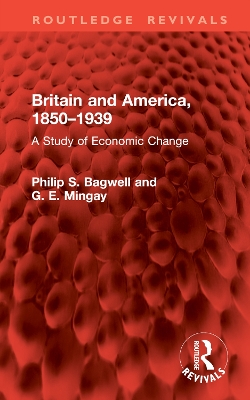Routledge Revivals
2 total works
First published in 1986, The Transformation of Britain, 1830–1939 delves into the significant changes that occurred across the landscape and society of Britain during this prominent age of reform and innovation.
The book traces the rapid increase in the pace and scale of change across Britain, and explores the key developments that occurred. It examines the changes in population as more people moved towards towns and cities; the growth in industry and trade and the resultant demand for methods of communication and transport; and the technological advancements in all areas of life. It highlights the impact that these changes left on the landscape of Britain, such as through the building of roads and railways, as well as on Britain’s social structure. It also considers the extent to which this crucial period shaped the successes and problems of modern Britain.
The Transformation of Britain, 1830–1939 will appeal to those with an interest in the social and industrial history of Britain.
First published in 1970, Britain and America 1850–1939 is a key text for anyone seeking to trace and interpret the development of the two great trans-Atlantic economies.
The authors present a comparative survey of the economic development of Britain and America. The book compares and contrasts the economic and social progress of the two countries in the period of rapid industrialization and dramatic social change between 1850 and 1939. Throughout, the authors explain the interaction of the two economies upon each other and give reasons – social and political as well as economic – for the outstanding differences in the economic life of the two countries.
Separate chapters give a comprehensive account of agriculture, transport, trade unions, banking, overseas trade, industry, and social problems. Among the individual topics considered are the economic significance of the Civil War, the influence of the railways, migration of labour and export of capital, the retardation of the British economy, the great slump of the 1930s and the New Deal. The authors support their arguments with numerous statistical tables, charts, and diagrams. This book will be of interest to students and researchers of economics and history.

